How to grow garlic: easy tips for growing this crop in your veg patch
With our advice on how to grow garlic, you'll never have to buy this staple ingredient again
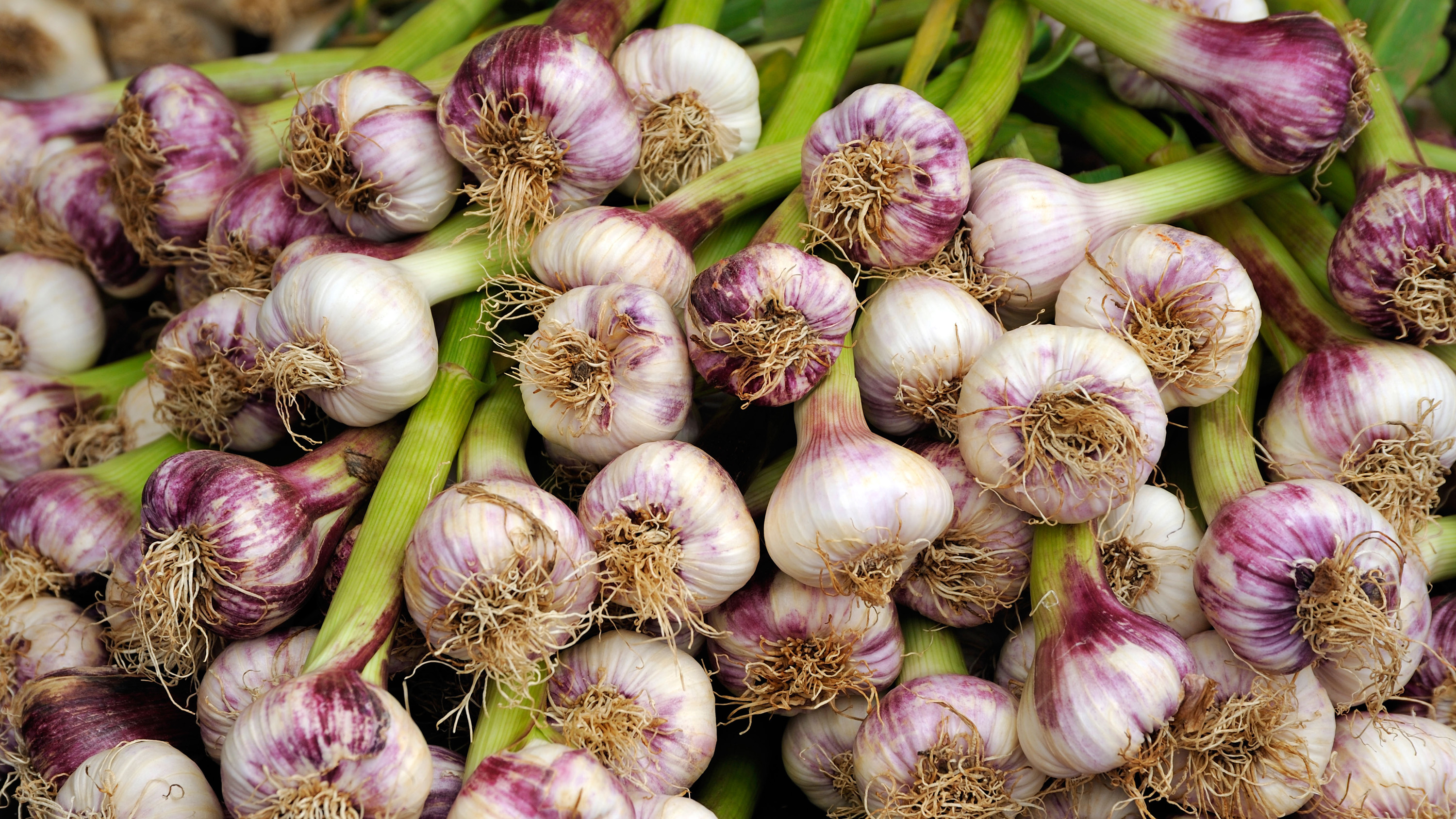

If you're wondering how to grow garlic yourself, you've come to the right place. Garlic is a staple ingredient and livens up so many meals, from classic roast lamb to simple pasta dishes. And the great news is, it's super straightforward to grow.
Although garlic makes a fantastic addition to raised garden beds in a veg patch, it's well-suited to small plots too. As long as it's planted in a sunny spot, with well-fertilized, free-draining soil, it can thrive even in a container on a balcony.
You can plant garlic in both autumn and spring. But before you get started, it's worth remembering that planting the bulbs in spring gives them less time in the ground to bulk up. So, if you can start your crops off in autumn, you'll have a much better chance of creating decent-sized bulbs to be proud of.
We've rounded up everything you need to know when it comes to learning how to grow garlic, including tips on when to harvest it and how to store it. You'll soon be wondering why you've been buying it from the store for so many years.
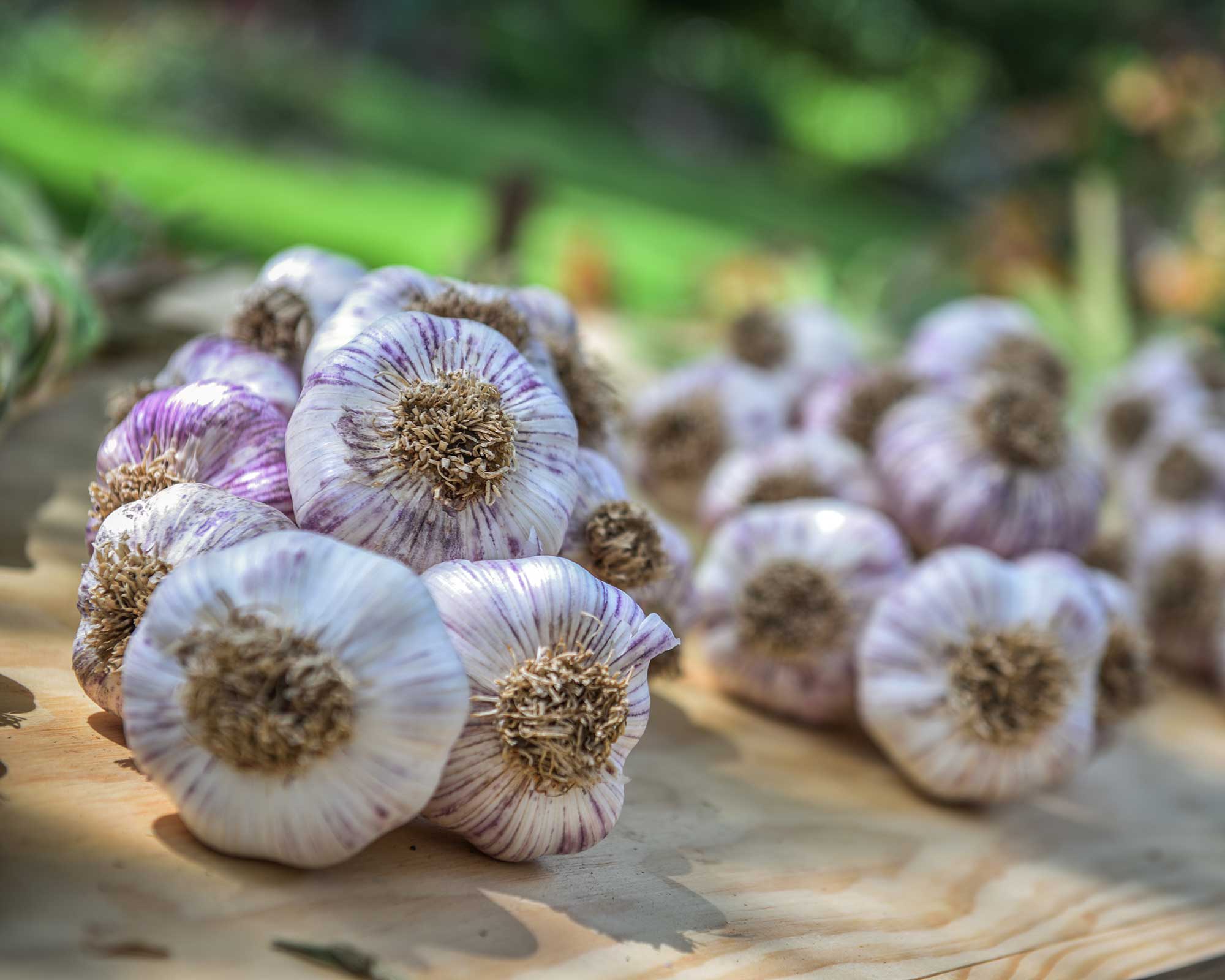
Growing your own garlic will reward you with a delicious harvest
How to grow garlic in 5 easy steps
Learning how to grow garlic is easy and will reward you with a delicious crop that's a stalwart in the kitchen. Simply follow our step-by-step guide to success.
- 'Before planting, dig in some homemade compost and apply a potash or general-purpose fertilizer,' suggests Janey Goulding, assistant editor of Amateur Gardening. Need some tips on composting? You'll find plenty in our feature.
- Next, grab your bulbs. 'Gently break whole heads into individual cloves just before planting, taking care not to damage the basal plates,' Janey says. You'll usually get about 10 cloves from a bulb. 'Use only the plumpest.'
- Plant the cloves, pointy side up, with the tips around 1in (2.5cm) below the surface. Most varieties are best planted in early autumn (October time in the UK and similar climates). You can plant them straight in the ground at least 15cm (6in) apart, with rows about 30cm (12in) apart. Alternatively, plant in a pot giving each clove plenty of space – typically three cloves to a 6in pot. Our guide on growing vegetables in pots has lots more useful tips.
- Water them occasionally during dry weather. But, don't water them for a month before harvesting, as this will help the cloves to ripen. Most garlic will be ready in the summer.
Being part of the same family as onions, shallots and leeks, garlic requires the same growing conditions, adds Camilla Phelps, gardening expert at Amateur Gardening. You can learn how to grow leeks in our guide.
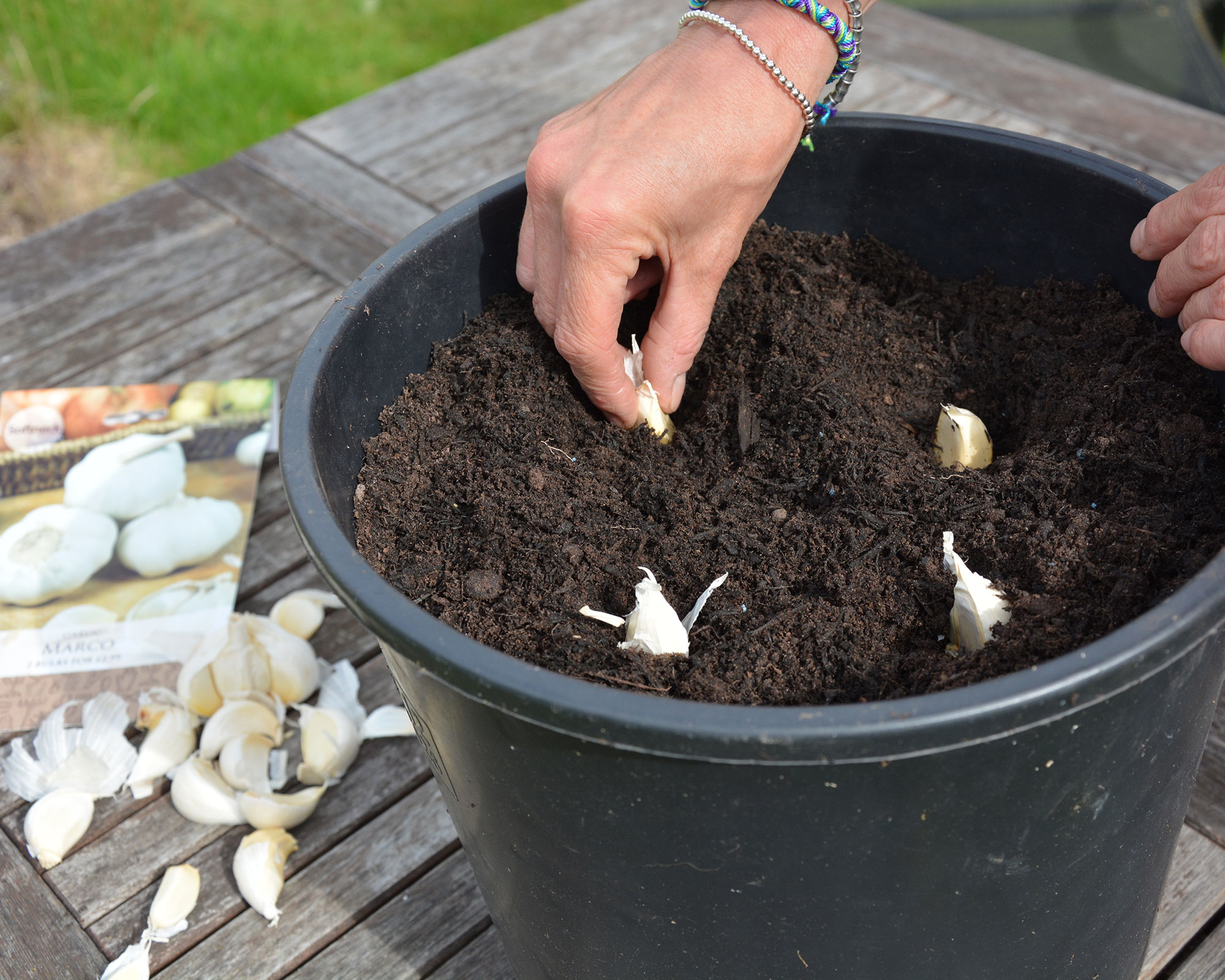
Because each plant doesn't take up much room, garlic also grows well in containers
What are the different types of garlic?
There are two types of garlic: softnecks and hardnecks. Even though hardnecks are generally hardier, you can plant both softneck and hardneck varieties in autumn, depending on your preference. Autumn varieties have a greater winter chill period than spring ones.
Hardnecks produce edible flower stems called 'scapes'. Remember to remove the flower spike in spring – if left on to develop fully this can reduce yields by 20 per cent. If you're after maximum individual clove size, hardnecks are your best bet (softnecks produce more numerous, smaller cloves).
Generally, softnecks have a milder flavor. They don't produce a flower spike and will store for longer after harvesting.
- Want to find out more of the best vegetables to grow in raised beds? Our guide has lots of advice.
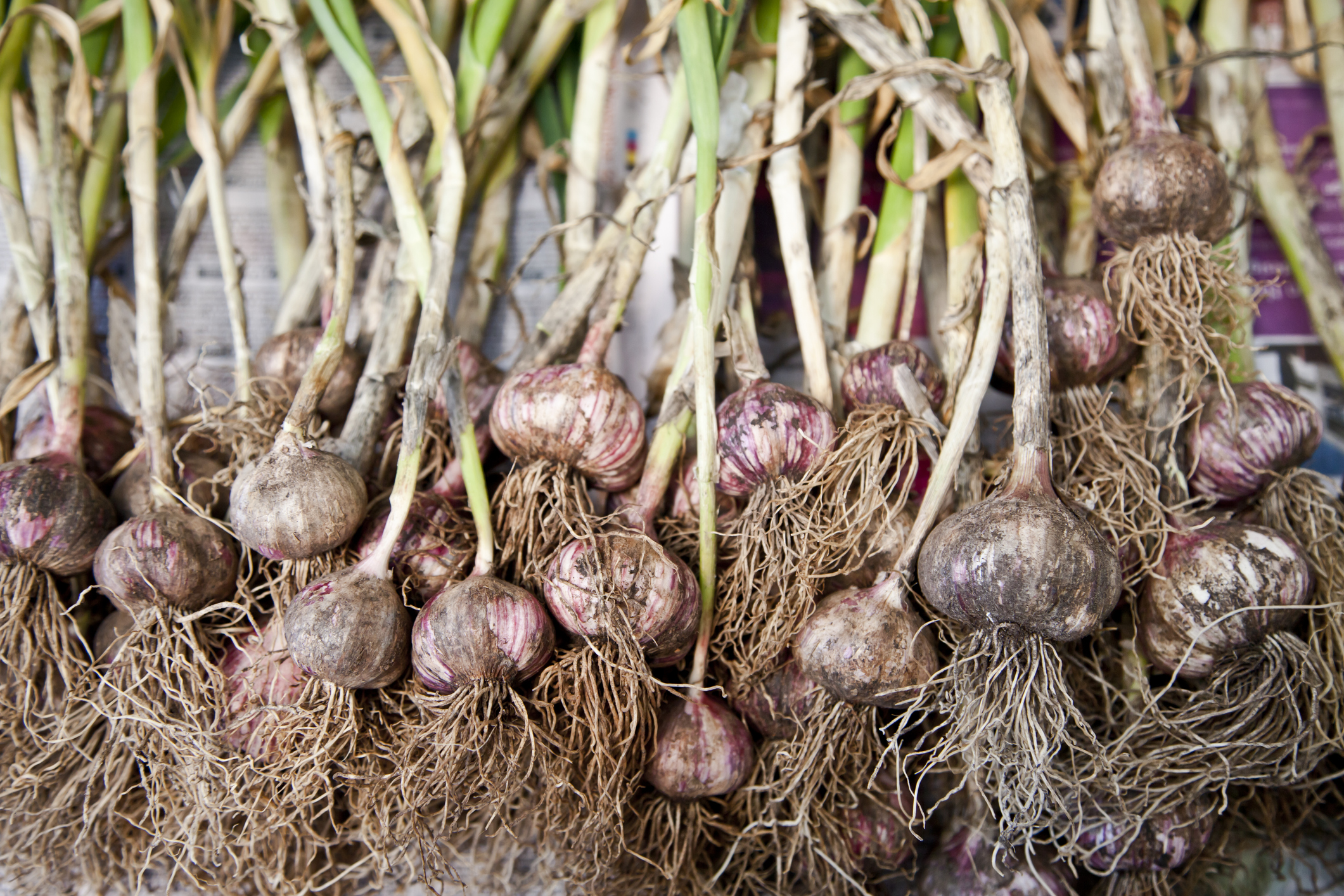
Garlics can either be softnecks or hardnecks
How long does it take to grow garlic?
'For best results, garlic needs a long growing season and a good dose of winter cold at the start,' says Camilla Phelps, gardening expert at Amateur Gardening. Sowing garlic in autumn allows the plants to establish a good root system over the next few months, with bulbs ready to harvest next summer. This is usually around July in the UK and similar climates.
However, there are some varieties which you plant in spring. These are ready as quickly as late summer.
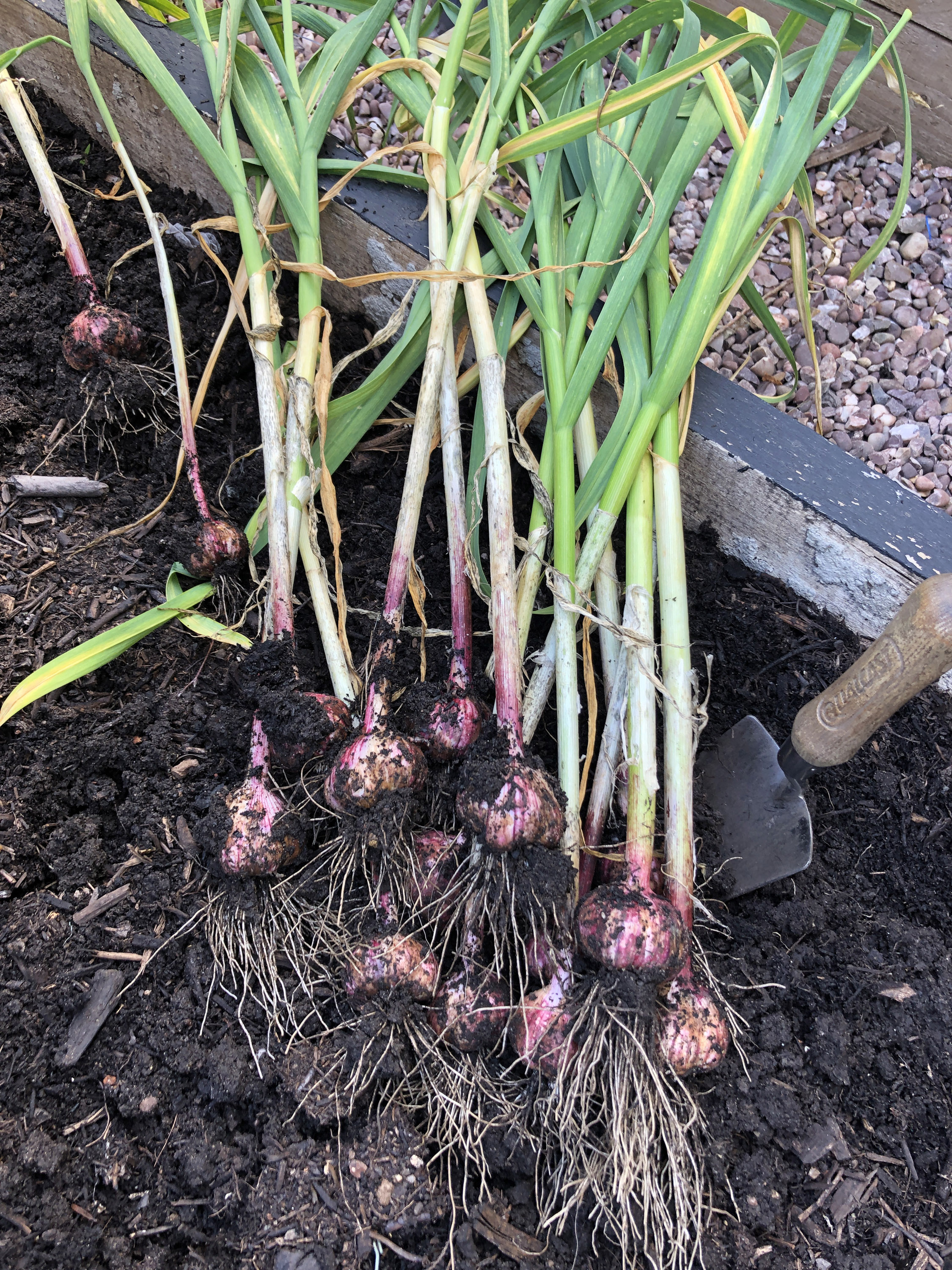
Start garlic off in autumn for the best results
How do you harvest garlic?
Harvest the bulbs by lifting them carefully with a garden fork, foliage intact. Then, lay them out in a single layer in the sun to dry off, says the RHS. Under a cloche, in a greenhouse, or in a dry shed is perfect, as long as you keep them well-ventilated. The drying process will take between two to four weeks.
When the foliage is dry, cut off the stalk and store the bulbs in a cool, dry place at 5–10°C (41–50°F), where further drying will take place, continues the RHS. Alternatively, plaiting garlic creates braids of bulbs that look great when hung up in the kitchen.
We've shared more tips from Monty Don on how to harvest garlic – and also shallots – in our dedicated feature.
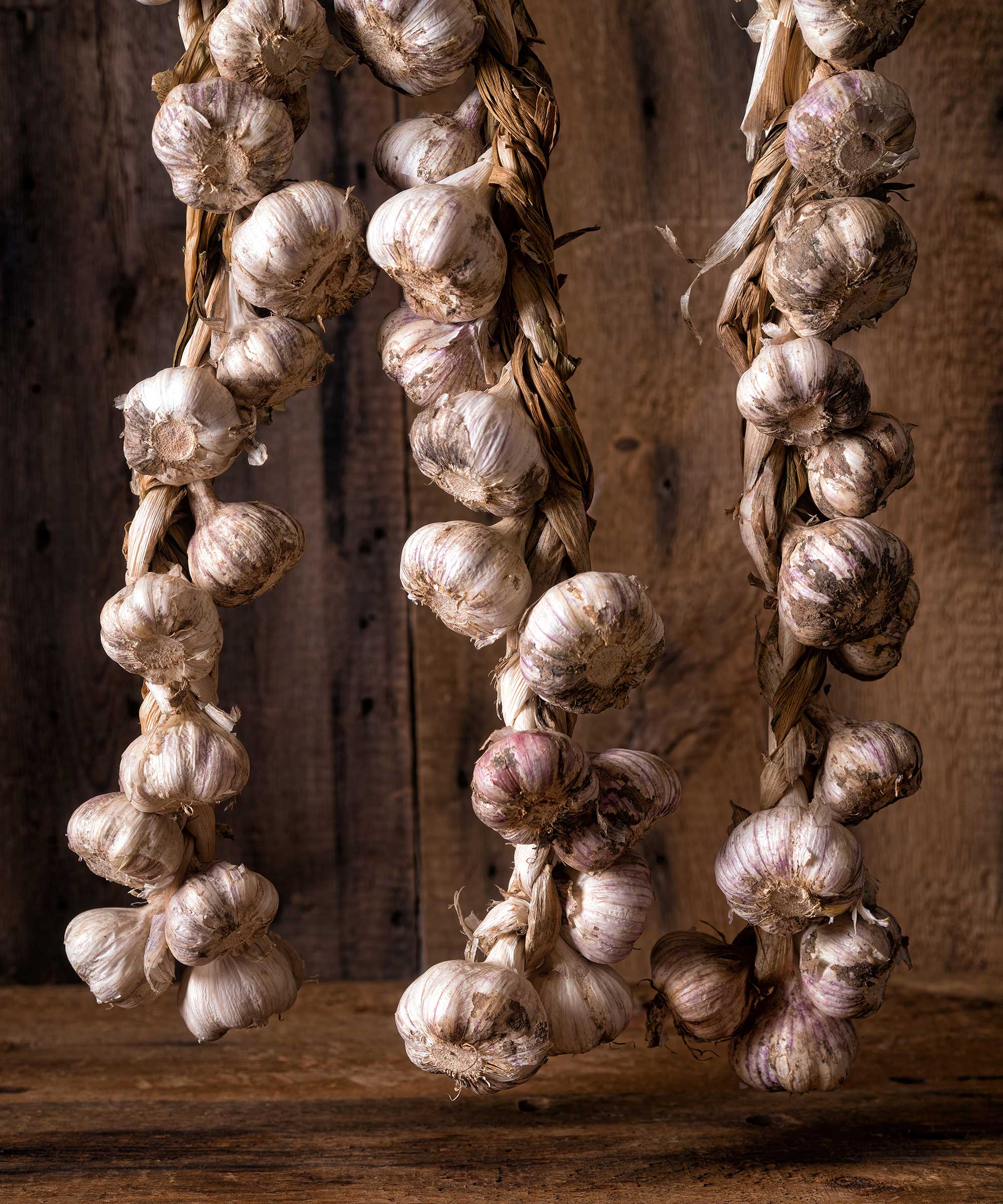
Braiding your garlic harvest is a convenient and attractive way to store it
How should you use garlic?
If you don't use garlic in your cooking already, you're missing a treat! It's a great way to add depth of flavor to everything from curries and stews to pasta. In fact, we can't think of many savory dishes that wouldn't benefit from the addition of some garlic.
Cloves of garlic will keep for a couple of months in a cool, dry place. If you have too much garlic to use in that timespan, then you can roast whole bulbs, squeeze out the cooked cloves and freeze in ice cube trays. Alternatively, peel raw cloves and blitz in your food processor with a bit of water, then freeze. You can cook either from frozen.
Why not learn how to grow tomatoes too? The two ingredients are perfect companions in the kitchen.
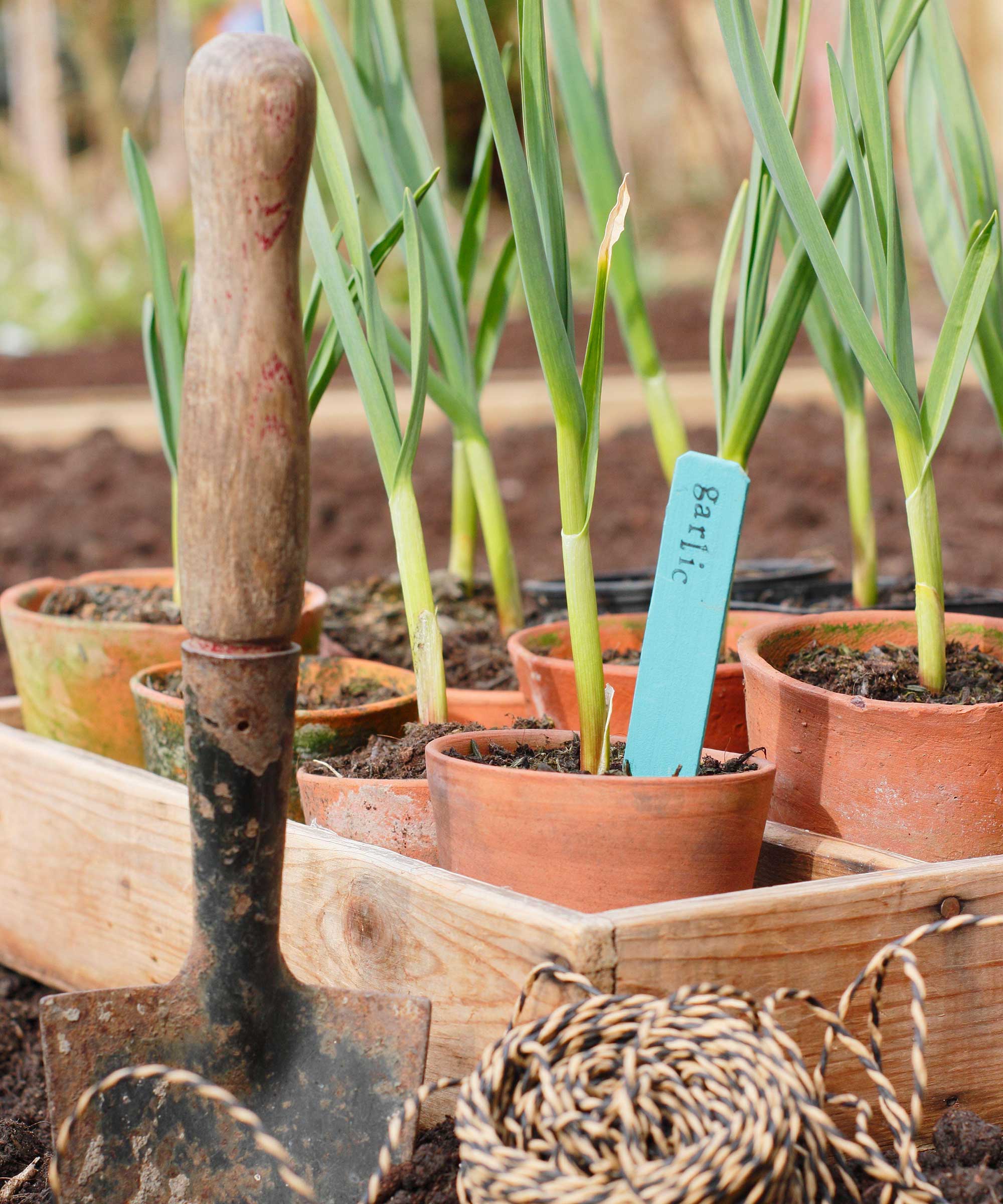
Garlic adds tons of flavor to dishes
Common problems with growing garlic
Garlic plants can easily be swamped by weeds once planted outside, so consider planting them through black plastic sheeting to keep the intruders at bay. Our guide on how to get rid of weeds has more practical advice.
Birds are another threat to garlic plants. Pigeons are especially partial to a garlic clove, so the RHS recommends using horticultural fleece, which goes over your plants, to deter them.
'A common problem for garlic is rust, which can appear in late spring and early summer,' says Camilla Phelps of Amateur Gardening. 'If plants are affected, you’ll notice the leaves dying back and, eventually, they will simply stop photosynthesizing, so this will affect the size of the bulbs. However, despite the rust above ground, they will still be perfectly edible.' The telltale sign is bright orange spots on the leaves. You can try to prevent it by making sure your plants aren't overcrowded.
If you notice the leaves of your garlic plants withering in dry weather, it may be a sign of onion white rot, which causes the bulbs and roots to develop white fluffy mould. Once established in your soil it's almost impossible to get rid of, so take care not to contaminate other nearby beds or containers (it can easily spread via muddy shoes or tools, for instance).
Want to try growing other vegetables in your garden? Our small vegetable garden ideas have lots more inspiration for growing crops in compact spaces.
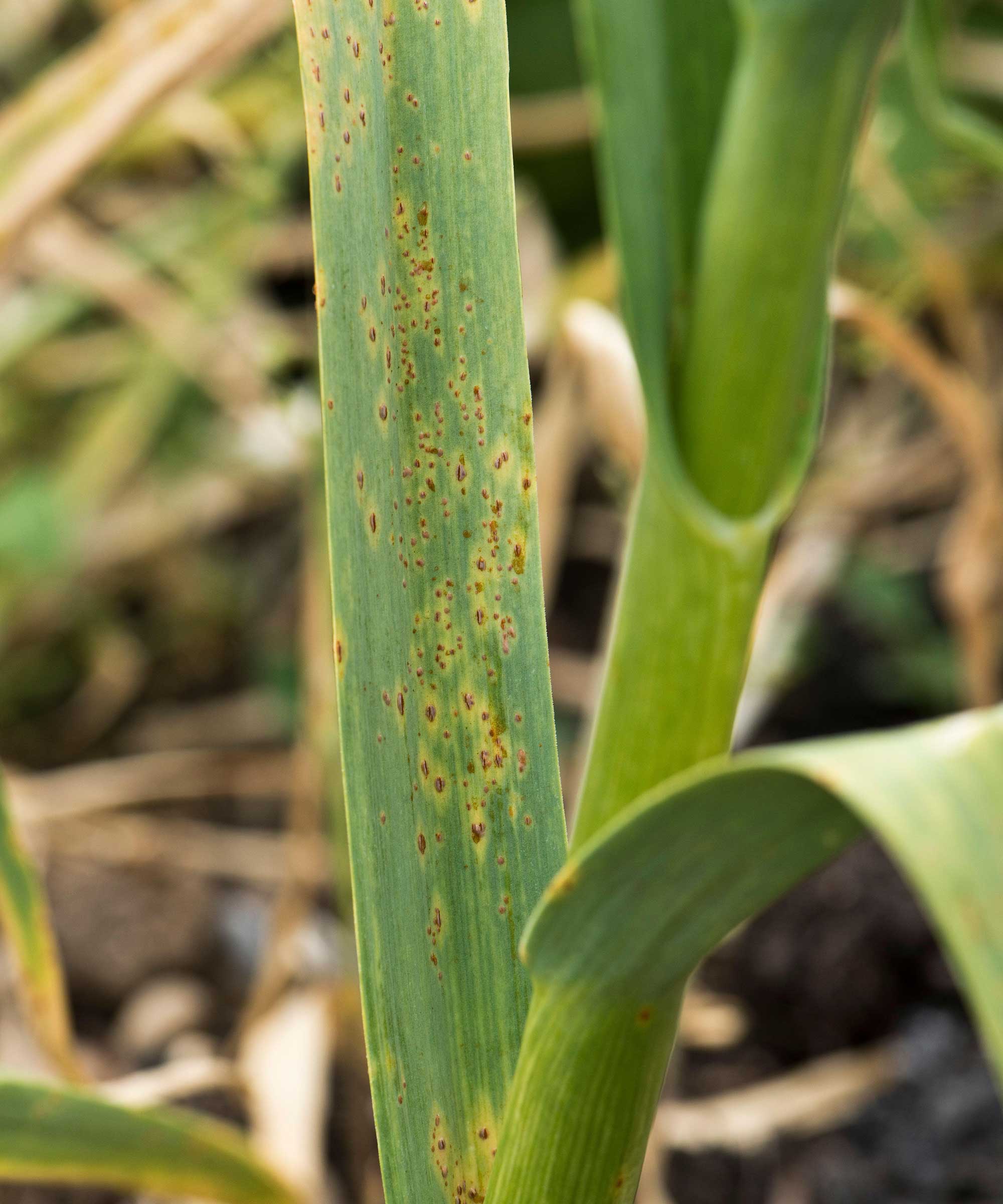
Garlic rust is a common problem
More top tips for growing garlic
- It's especially important to plant autumn garlic on free-draining soils to avoid winter waterlogging. Use raised beds on plots with heavy soil.
- Only break whole heads into individual cloves just before planting, taking care not to damage the basal plate or bruise the flesh.
- The largest cloves have the potential to produce the biggest yields, so plant these as a priority, using up smaller ones as spares.
- Use a trowel to plant the cloves, rather than pressing them into the earth.
- Add a standard top dressing of dried poultry pellets in mid-February or early March, to further help boost bulb size.
- Garlic can grow happily alongside many other veggies, flowers and herbs with mutual benefits. You can find out the best companion plants for garlic in our dedicated feature.
- 'Whatever you do, don't be tempted to plant a clove from a supermarket-bought bulb,' says Camilla Phelps of Amateur Gardening. 'These are often treated to prevent sprouting, or sprayed with fungicide, so the results will disappoint. However, if you've grown your own garlic this year, you can replant some of the cloves.'
- 'Don't plant garlic in soil that has been used in the previous season for growing any member of the onion family, including leeks,' advises Ruth Hayes, gardening editor of Amateur Gardening. 'Crop rotation helps produce healthier crops and larger yields.'
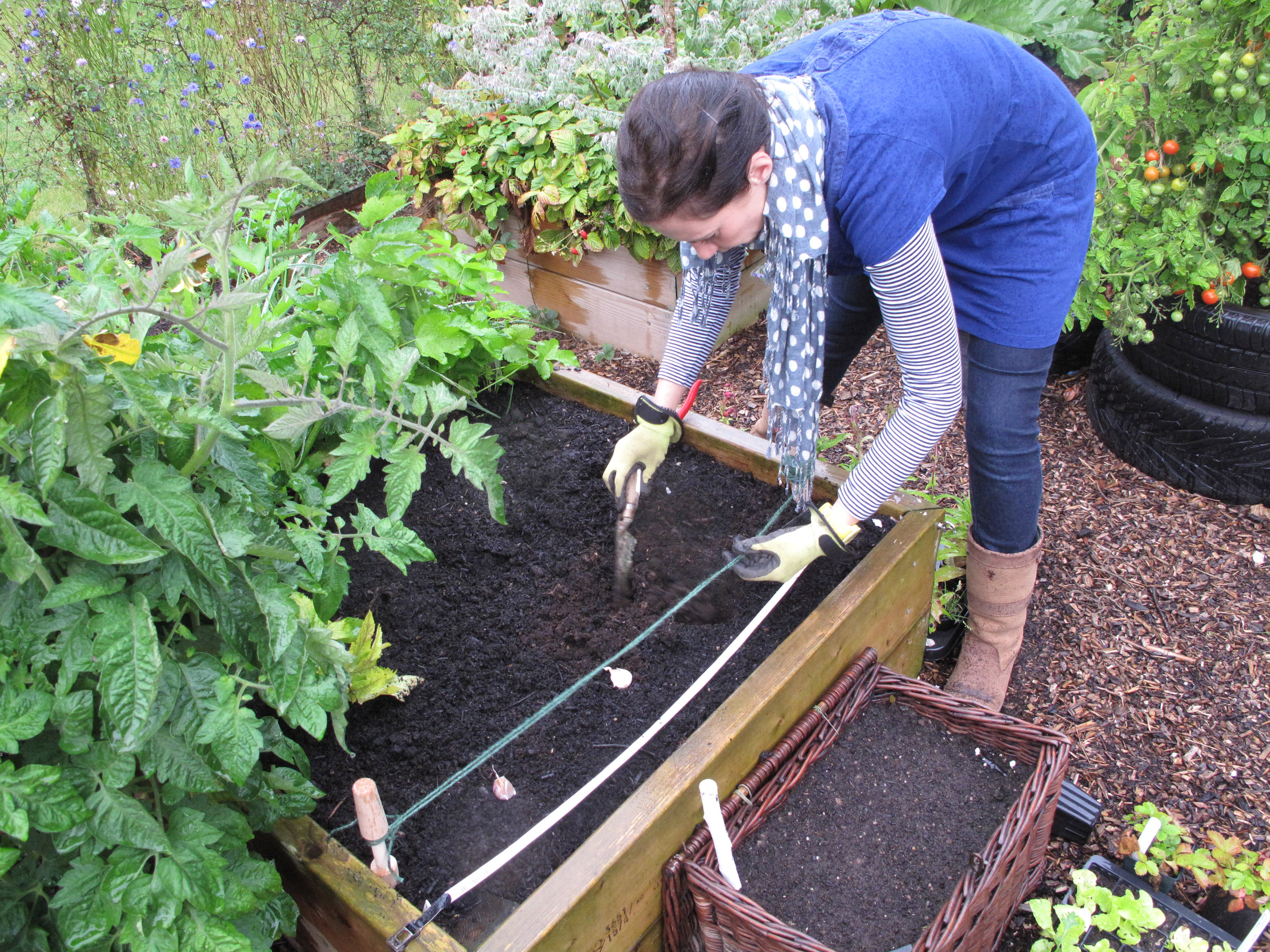
Be sure to plant your garlic in free-draining soil
Where to buy garlic bulbs
Now you know how to grow garlic, you're probably eager to get your hands on some bulbs. Most garden centers will have them but you can also order them online. Our quicklinks will make the job easier.
Where to buy garlic bulbs in the UK:
- Shop garlic bulbs at Thompson & Morgan
- Shop garlic bulbs at Suttons
- Shop garlic bulbs at Dobies
- Shop garlic bulbs at Amazon
- Shop garlic bulbs at Sarah Raven
- Shop garlic bulbs at Crocus
Where to buy garlic bulbs in the US:
- Shop garlic bulbs at Amazon
- Shop garlic bulbs at The Home Depot
- Shop garlic bulbs at Burpee
- Shop garlic bulbs at Walmart
6 top garlic varieties to try
Try planting one of these top crops in your garden this autumn.
1. 'Germidour'
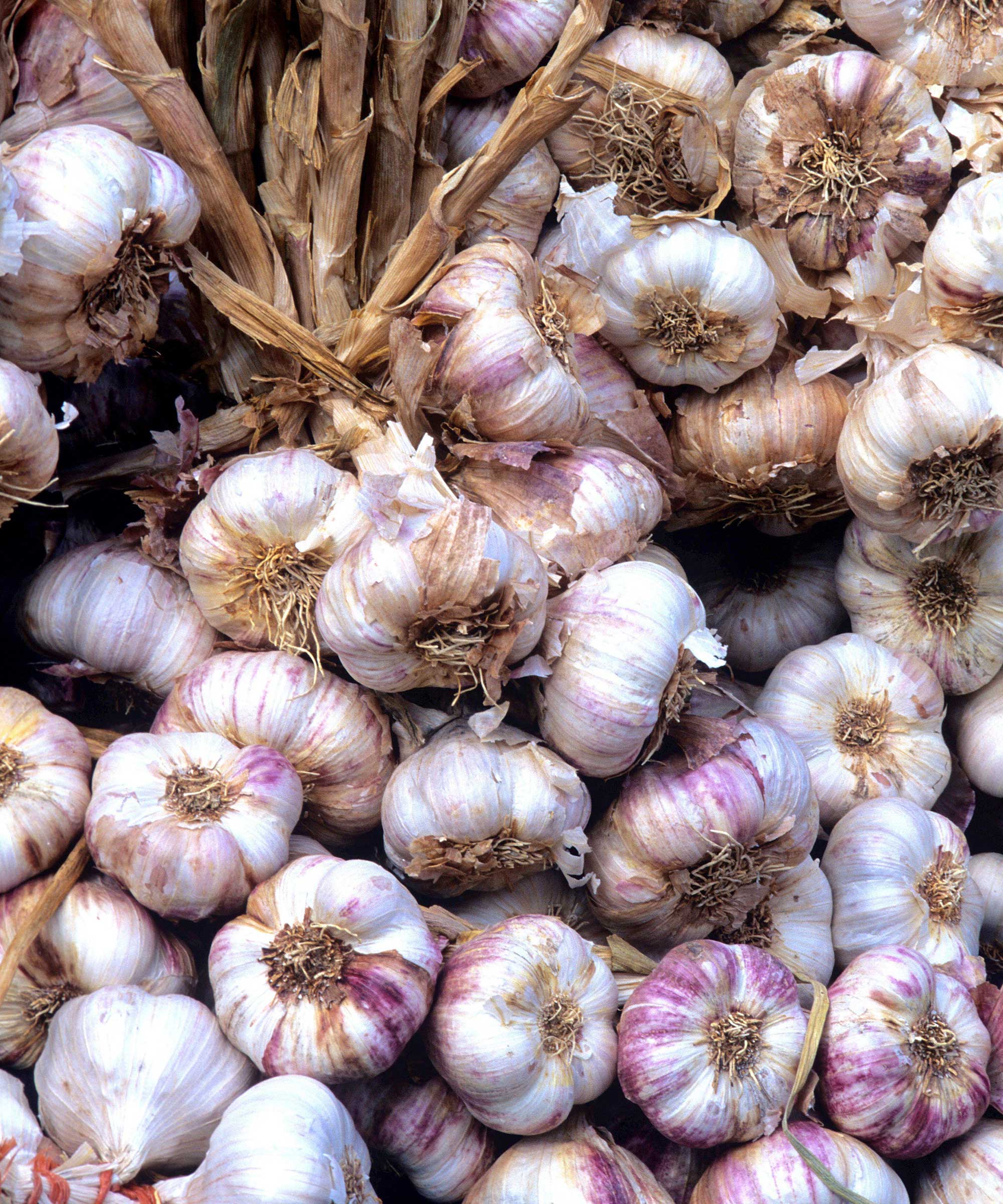
This pretty French variety makes a reliable pick
This well-known softneck variety was given an RHS AGM way back in 2004. It's a reliable choice, originating from France, and can be planted in both fall or spring. If you're looking for the easiest vegetables to grow, give this one a shot.
The storage life is impressive, with plants producing bulbs that are predominantly white with attractive purple streaks. It has a pleasantly mild yet still rich flavor, with plants growing to 45cm (18in) tall.
2. 'Elephant'
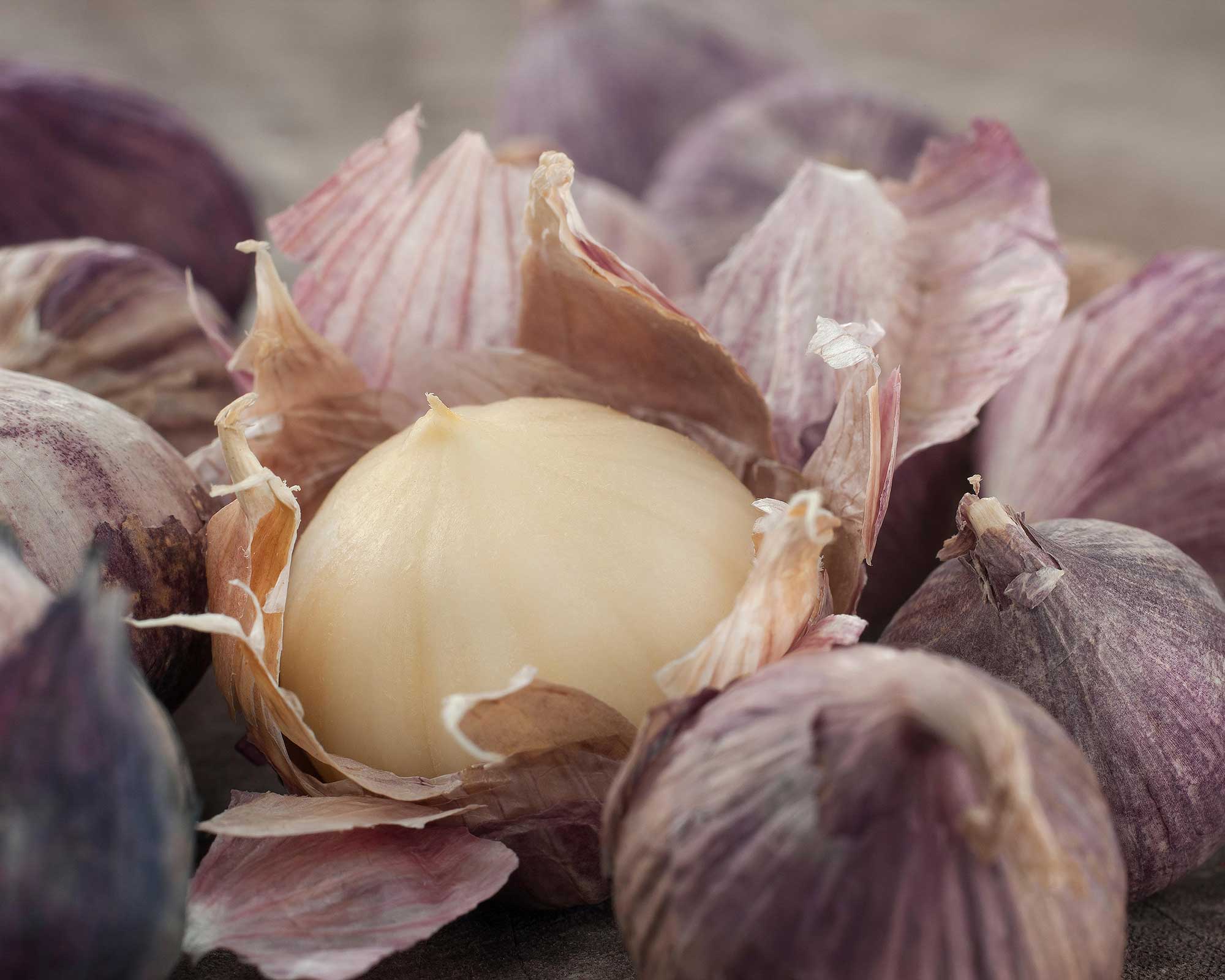
This variety has a mild taste despite its giant size
'Elephant' garlic produces huge bulbs and is actually a type of leek. Plant them in autumn to give yourself the best chance of growing absolute monster cloves – well over a kilo in weight isn't unheard of! Be sure to space them out wide – you'll want around 25–30cm (10–12in) between cloves.
'The bulbs and cloves may be larger, but the flavor is milder,' says Camilla Phelps, gardening expert at Amateur Gardening. The foliage and stalks aren't small either – they can climb up to 1.5m (4.9ft) tall. 'Break off the flower stalk to prevent it going to seed.'
Why not continue the theme and grow some giant sunflowers in your garden too? Our guide on how to grow sunflowers has plenty of tips.
3. 'Cristo'
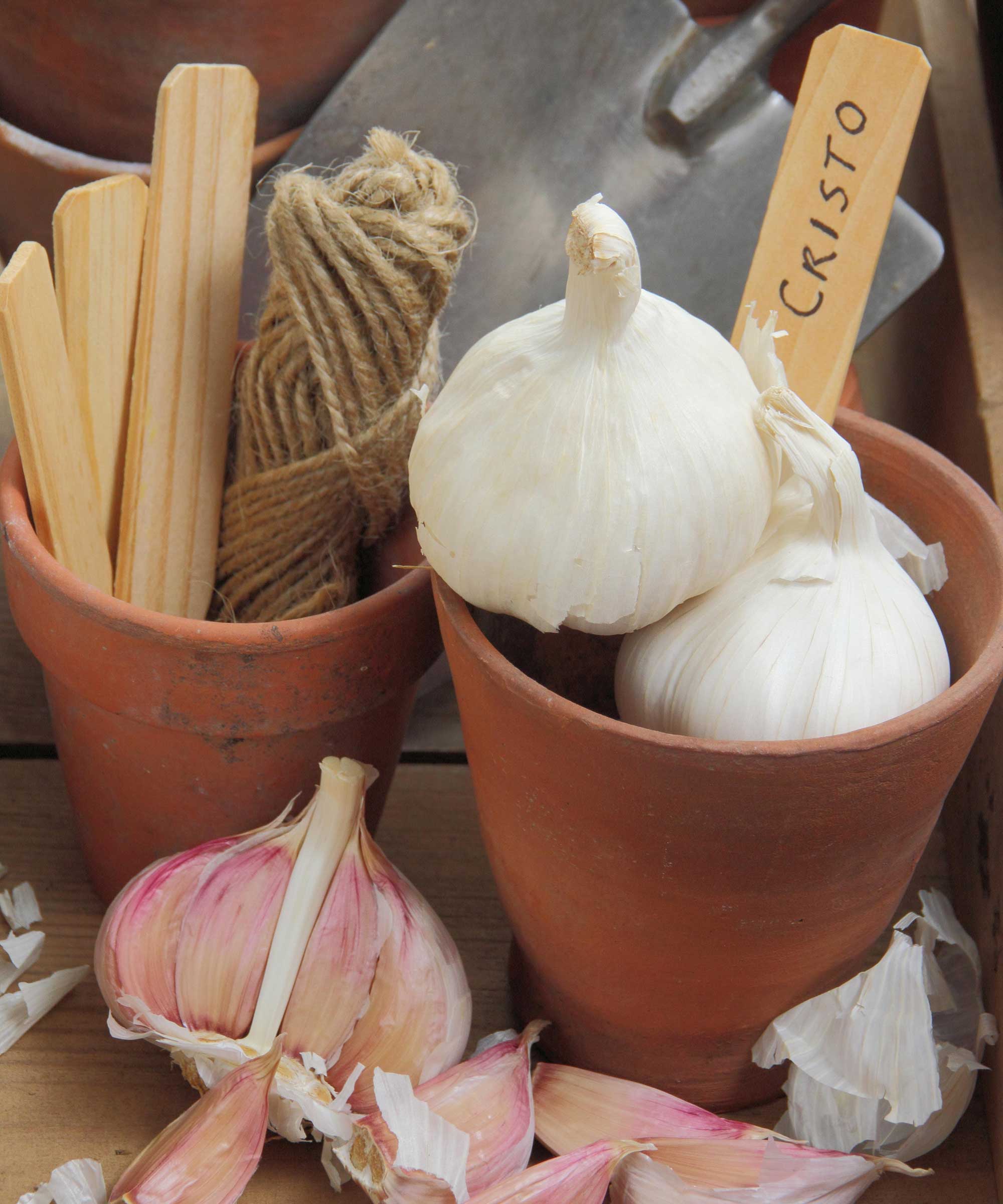
'Cristo' makes a great addition to the kitchen
'Cristo' is a softneck variety with good, strong flavor and a delicious aroma. It produces large, pure-white bulbs with 12 or more plump cloves.
Growing to heights of 30cm (12in), it matures slightly earlier than other varieties and stores well. Plant in spring or fall.
4. 'Solent Wight'
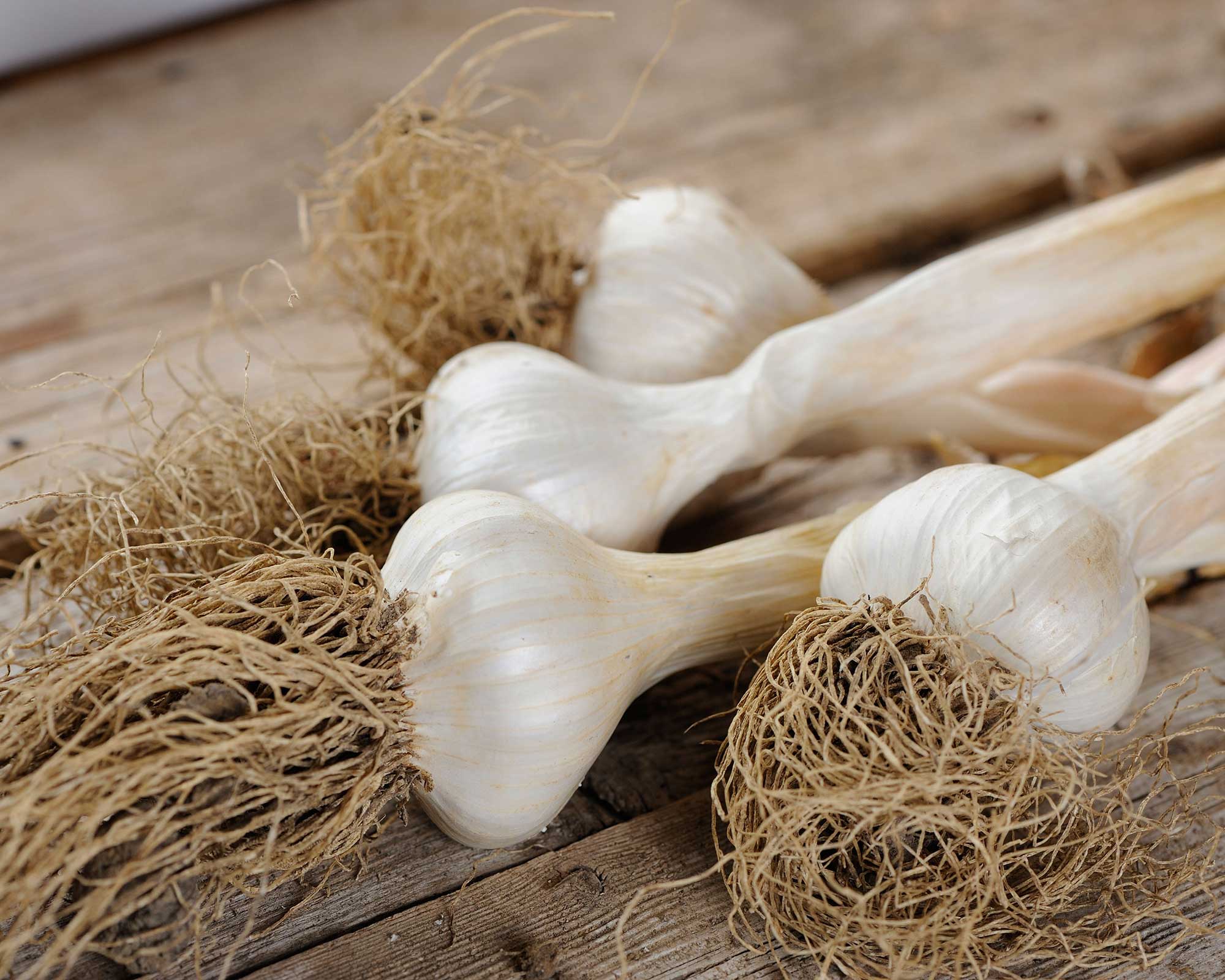
A great choice for growing in northern climates
'Solent Wight' is 'one of the most reliable softneck bulbs from the Isle of Wight,' as says Camilla Phelps of Amateur Gardening. It is bred to grow well in the UK climate, making it a popular and easy choice for the kitchen garden.
The bulbs have exceptional flavor and store well, too. The plants will grow to around 30cm (12in).
5. 'Lautrec Wight'
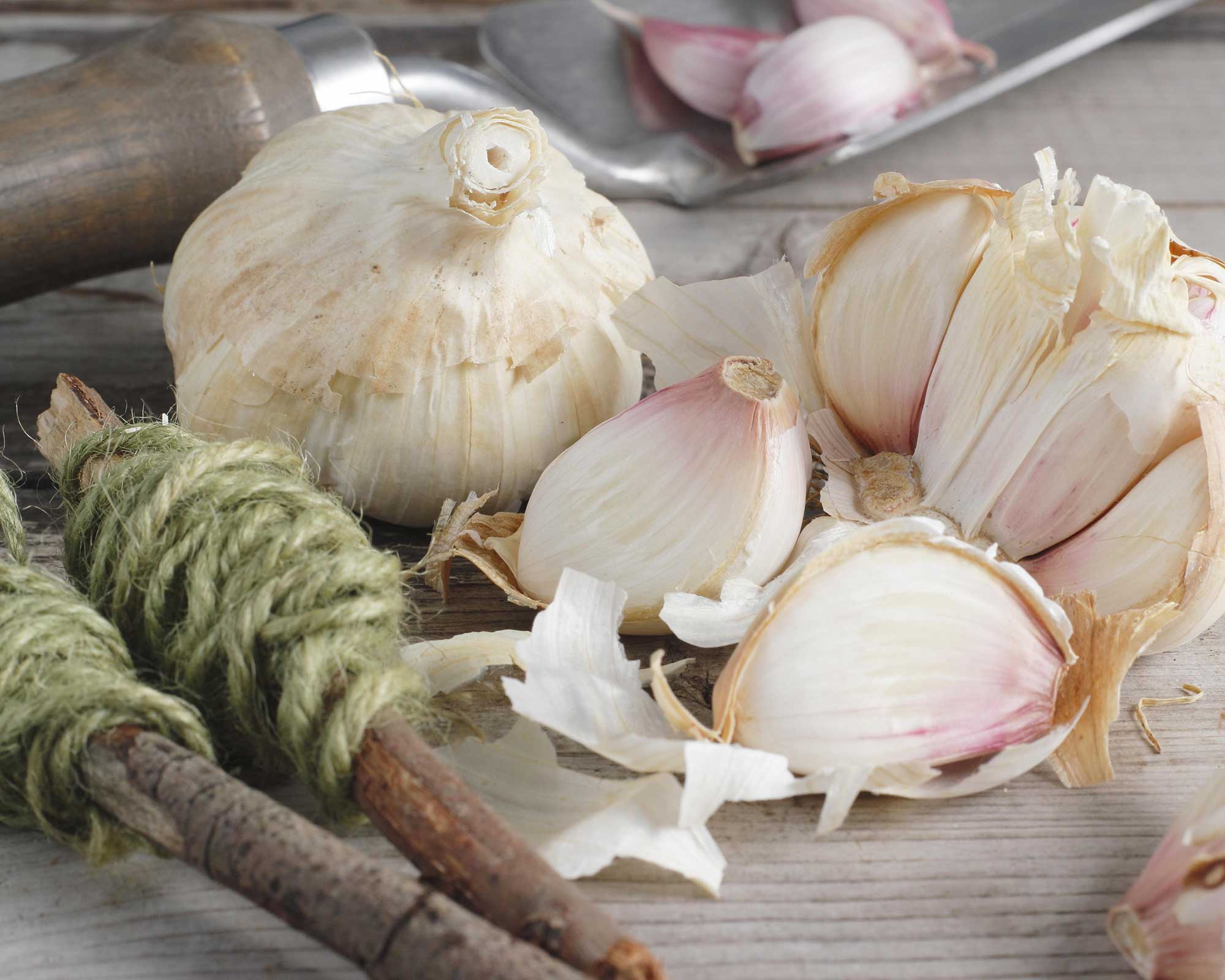
Another variety that originates from France, 'Lautrec Wight' has a fantastic flavor
A hardneck variety, 'Lautrec' originates from the town in south western France. It offers white-skinned bulbs and deep pinkish cloves, with a smooth and delicious flavor that's widely regarded as one of the best.
This variety can be planted in autumn or spring and will grow to around 30cm (12in).
6. 'Messidrome'
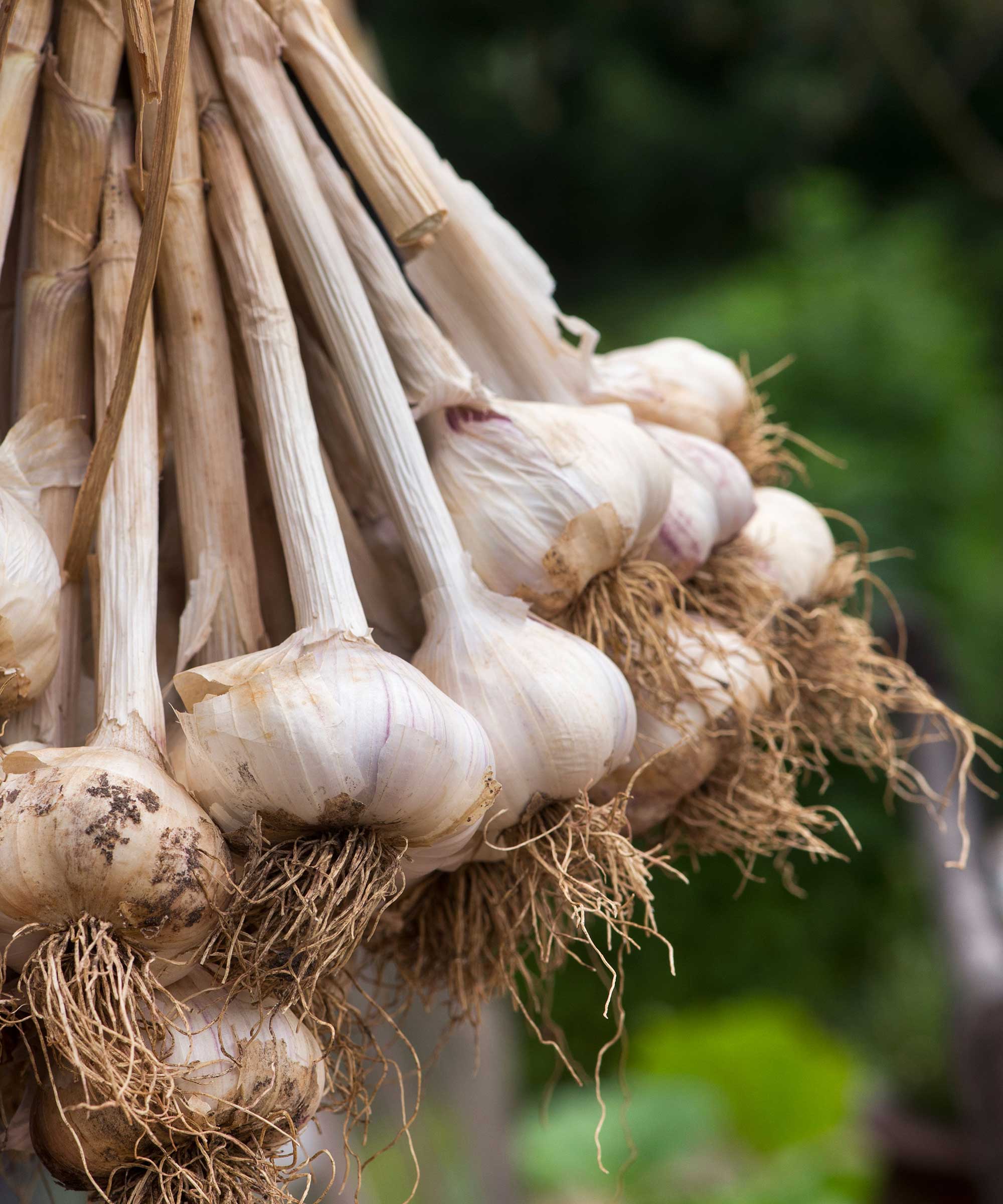
An easy grower with fabulous flavor
'Messidrome' is a softneck garlic that originates from France. It offers large, white bulbs with delicious flavor, so is perfect if you love to cook up a storm in the kitchen.
Easy to grow, it's suitable for autumn planting in a raised bed, or even in a container as part of your balcony garden ideas. The foliage will grow to a height of 60cm (24in).
Laura has been writing about homes and gardens for 17 years. She joined Real Homes magazine in 2015 as Deputy Editor and then become Editor before taking on her current position as Content Director for brands including Country Homes & Interiors, 25 Beautiful Homes, Period Living and Style at Home. She's currently redesigning the garden of her 1960s home in Worcestershire and will eventually reinstate the swimming pool that's currently filled with mud! Outside of homes, she's a TV presenter for QVC.
